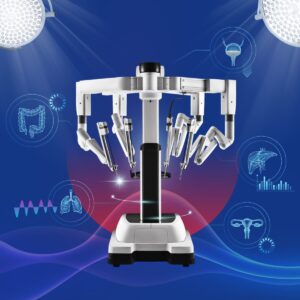Exercise has recently become a vital part for people with healthy lifestyle and active life. Nevertheless, sport injury is unavoidable. It can frequently happen, ranging from mild to severe injuries. These injuries during exercise or playing sport is originally linked to the medical field of “Sports Science”. Sports Science is a branch of medicine that deals with physical fitness, treatment and prevention of injuries related to sports and exercise. Physical fitness such as cardiorespiratory endurance, muscle strength, muscle endurance, flexibility and body composition needs to be tested in order to customize individual’s plan for playing proper sports and having appropriate exercise. Personalized counseling could be obtained from highly experienced and well-trained sports medicine doctors and multidisciplinary team who is specialized in sports medicine.
Types of sport injuries
The presence of sports medicine is becoming more important these days since it is an integrative field that confers substantial benefits to athletes and active individuals. Different sports have different types of injuries which require different care and treatment options. Based on sports contact levels, sports are classified into:
1. Contact sport: a sport in which the participants necessarily come into bodily contact with one another such as football, basketball and rugby.
Injuries: Contact sports usually lead to tearing of muscles or tendons and broken bones.
2. Non-contact sport: a sport that participants do not have the chance of ever coming physically in contact with their opponents either intentionally or unintentionally, for example: running, swimming badminton, tennis and golf.
Injuries: Non-contact sports cause repetitive use of particular parts of the body such as when playing golf, movement is frequently repeated and it can put significant stress on the same muscles, tendons and joints. Another examples are badminton and tennis which players have to use one particular arm to continuously hold the racquets.
Injury areas
Both contact and non-contact sports often cause common injuries including:
- Muscles: muscle sprain, muscle inflammation or torn muscles
- Tendons/ ligaments/ joints: tendonitis, sprain (stretch or tear in a ligament), strain (stretch or tear of tendons) and joint dislocation.
- Bone: broken bones or fractures.
Treatment options
There are different types of treatment for sport and fitness-related injuries which are entirely depending on types of injuries and severity. Treatments options range from oral medications, rehabilitation and surgery. It can be either monotherapy by using single approach or combined all options together. Since different patients might have different underlying conditions and individual’s factors, treatment plan should be individually designed as “ custom-made treatment”. In addition, “targeted therapy” significantly helps to treat affected areas precisely and prevent any possible damages of the surrounding tissue and organs. Arthroscopic surgery is a minimally invasive surgical procedure that is considered as a main targeted therapy for sport injury treatment. Besides expert and well-trained sports medicine doctors and multidisciplinary team specialized in sports medicine supported by cutting-edge technology, our world-class quality in sports medicine at Bangkok Academy of Sports and Exercise Medicine (BASEM) is internationally certified by FIFA as “FIFA Medical Center of Excellence”.
We have fully qualified for this certification due to:
- Continuous research and training programs as well as knowledge competency in football.
- Knowledge exchange and international academic activities.
- Well-trained sports medicine doctors who are certified by FIFA.
- FIFA 11+ program which is preventive program for football players.
- Health promotion programs to enhance physical activity and fitness.
- Comprehensive care programs for national athletes, professional athletes and sport players in clubs or institutes.
Prevention of sport injuries
Although the advancements in sports medicine has continuously evolved with effective treatment approaches and rehabilitation care for full recovery, sports injuries can often be prevented with proper precautions. Some basic steps to prevent sports injuries include:
- Self-care prevention:
Stretching before and after exercise can improve the ability of muscles to contract and perform, leading to reduced risks for injuries. At our BASEM, we offer “Fit for Play” which is a fitness assessment program to evaluate physical activity, strength, overall health and physical status before playing sports and exercise. It is well designed for general sport players and the elderly. If the results obtained from this assessment program indicate the insufficient fitness level needed for particular sports, the additional programs to enhance strength and endurance will be further recommended for individual patients. Another program which is fully created for professional athletes and sport players is called “Fit for Performance”. The objectives of this assessment program is to thoroughly determine health status and physical fitness of an individual player and help to improve strengths throughout the games.
Fitness assessment and evaluation is comprised of 5 main parameters:
- Cardiorespiratory fitness: refers to the ability of the circulatory and respiratory systems to supply oxygen to skeletal muscles during sustained physical activity.
- Muscular strength: refers to the amount of force a muscle can produce with a single maximal effort.
- Muscular endurance: defined as the ability of a muscle or group of muscles to sustain repeated contractions against a resistance for an extended period of time.
- Body composition: refers to the proportion of fat and fat-free mass in the body.
- Flexibility: defined as the range of motion of joints or the ability of joints to move freely. It also refers to the mobility of muscles, which allows for more movement around the joints.
- Prevention of external or environmental factors:
- Using appropriate sport equipment. The quality of protective equipment such as padding, helmets, shoes, mouth guards have helped to improve the safety in sports. For example, running shoes with poor quality usually cause foot and knee pain.
- Playing sports in proper environment with appropriate lighting and good ventilation system in order to prevent heat stroke.
If all instructions are followed strictly before, during and after playing sports, the risks of sport injuries are significantly reduced. However, if the injuries are inevitable, immediate medical attention provided by experienced sports medicine specialists must be sought as soon as possible. Early diagnosis always results in the increased chances of successful treatment. The myth that knee or shoulder surgeries are frightening must be corrected. The advanced technology largely improves the accuracy of diagnosis, effectiveness and safety of treatment as well as comprehensive rehabilitation care. More importantly, sport players can get back to their professional games and daily life even better and quicker.











